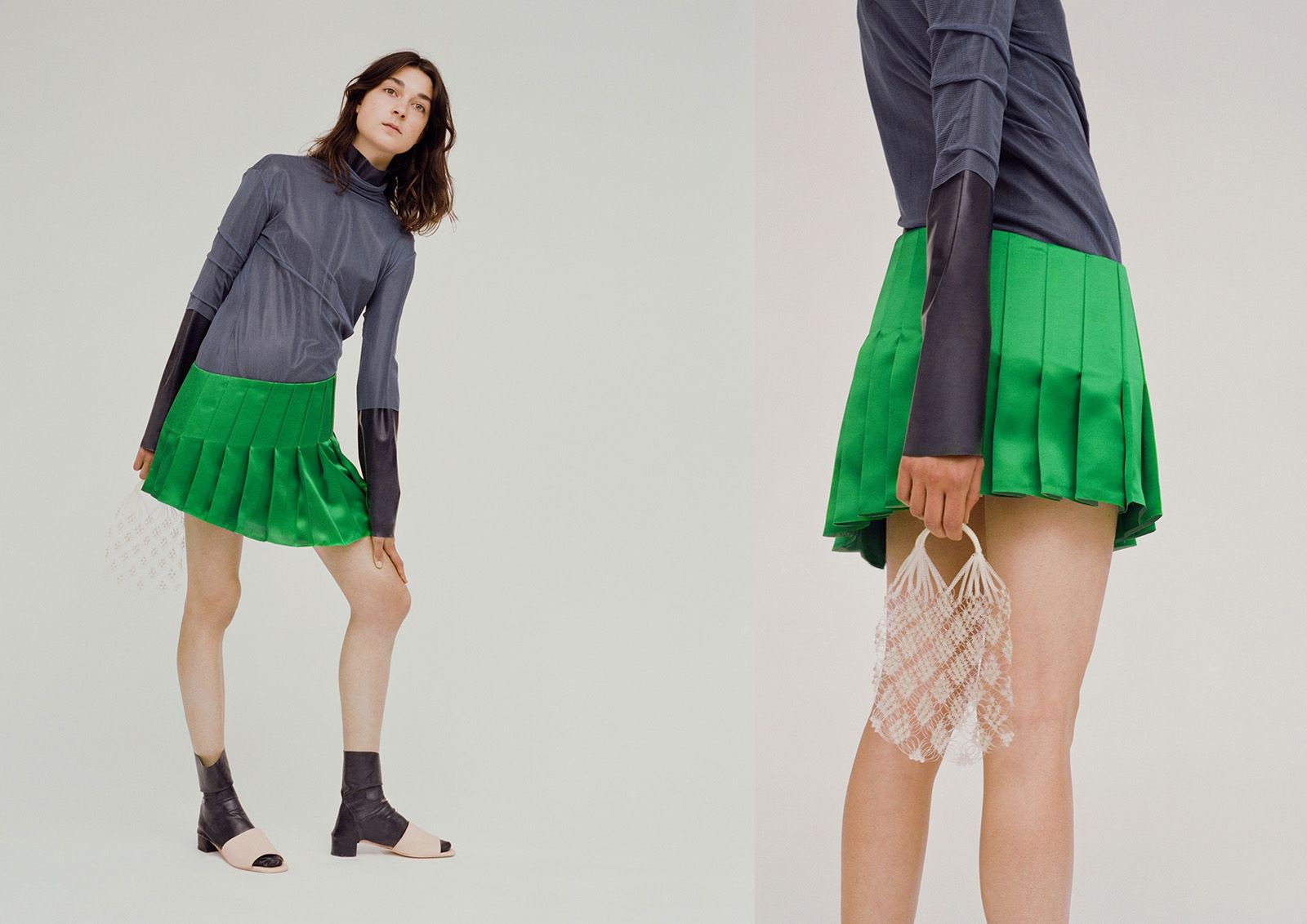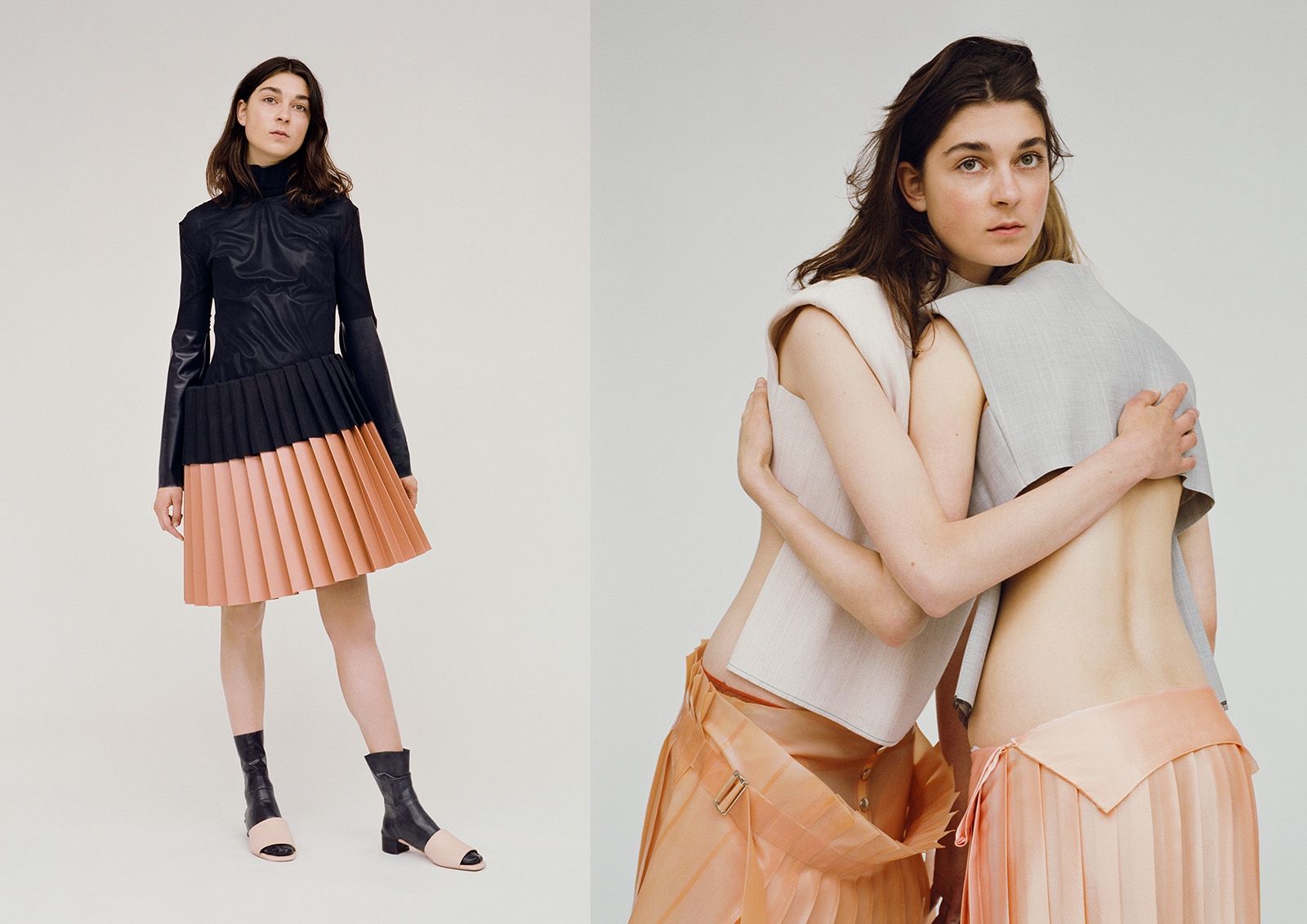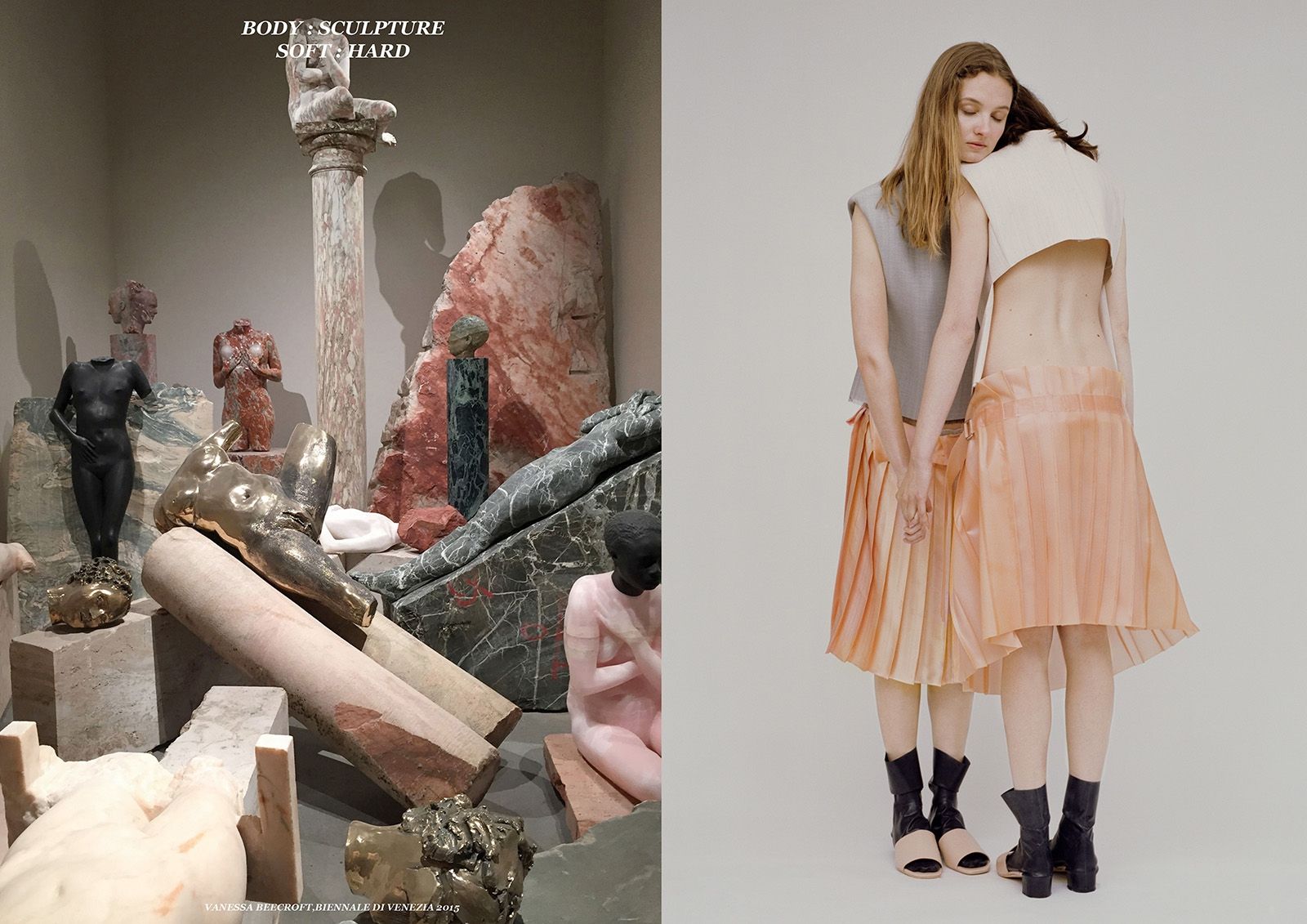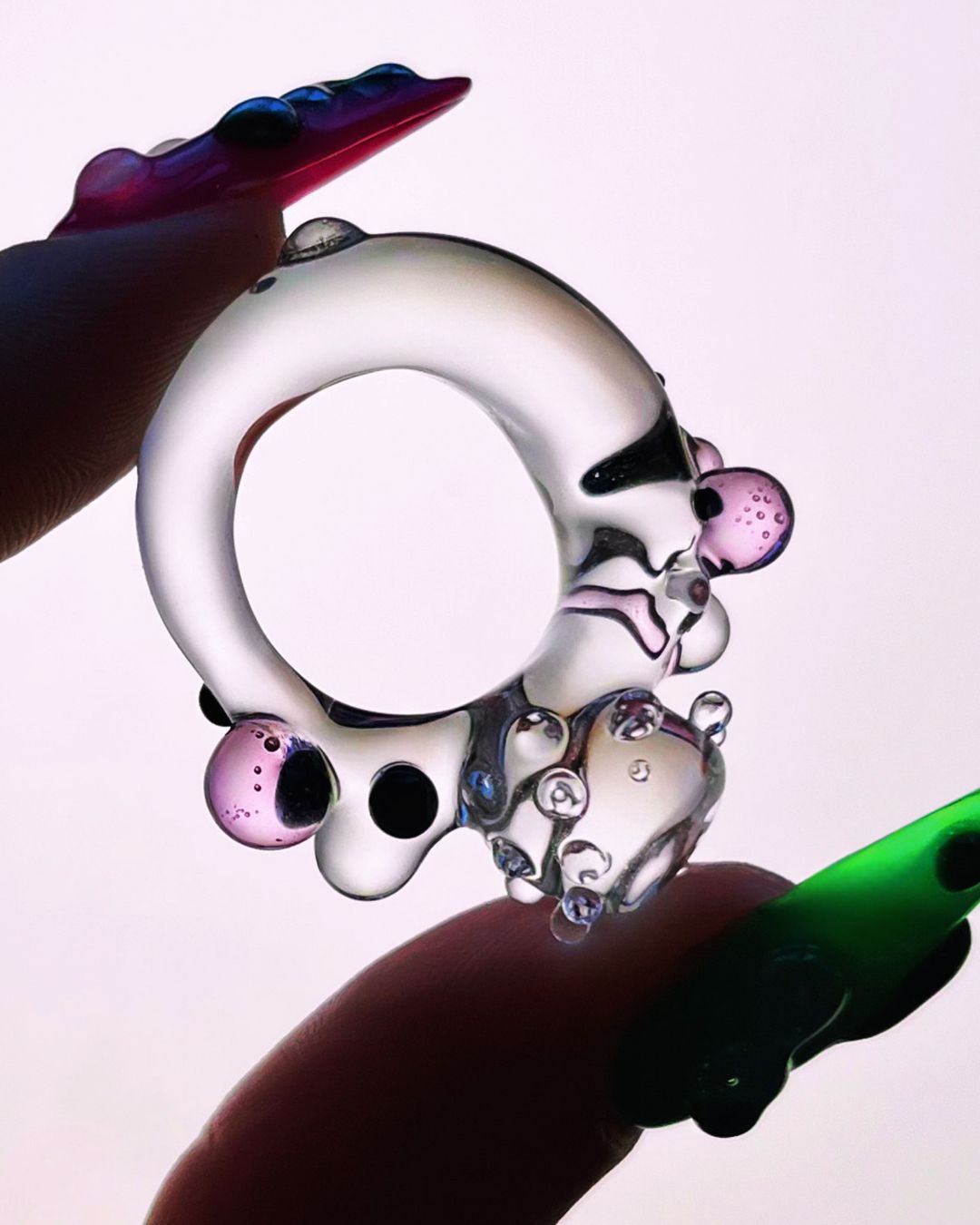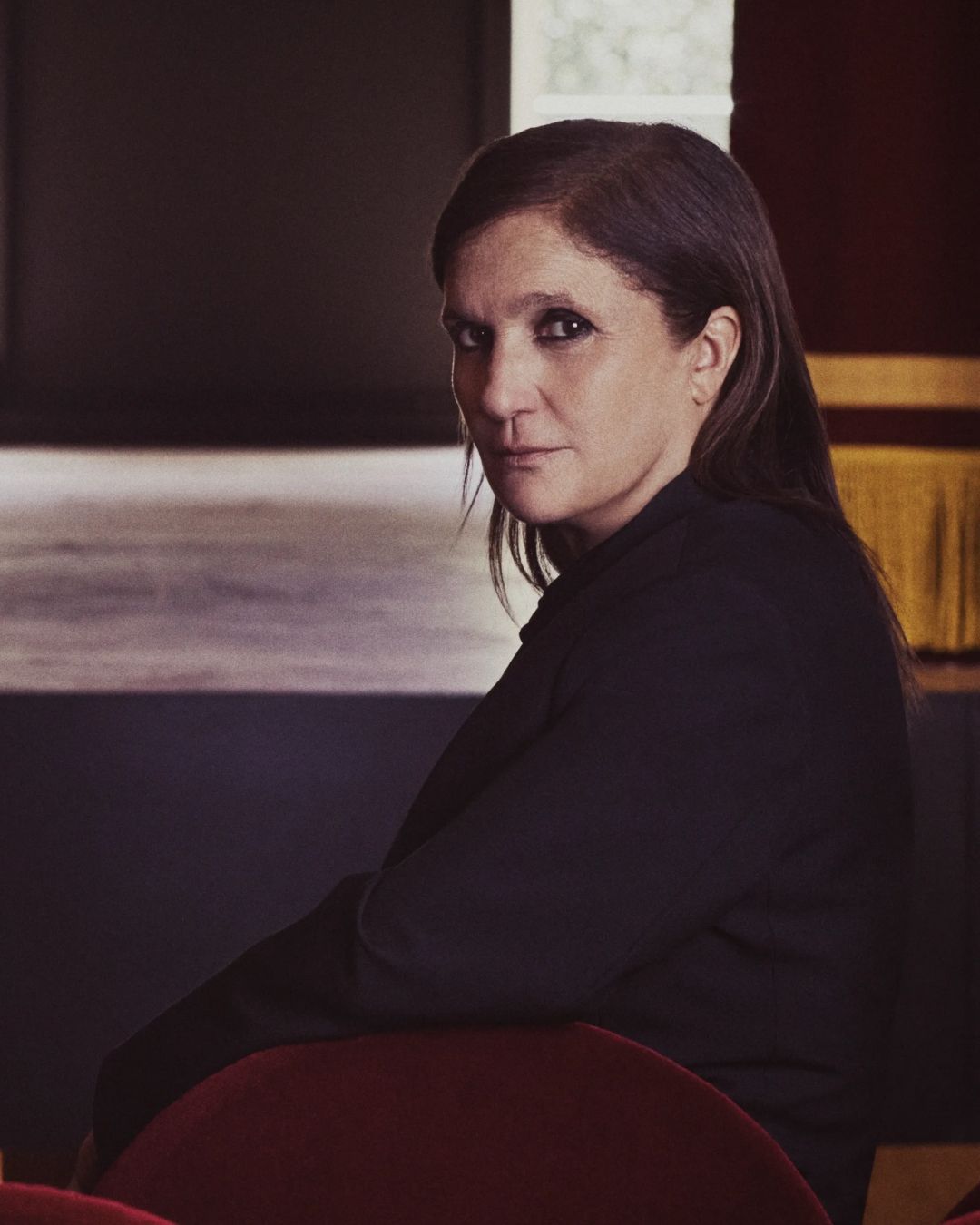
Hello London #12 - CSM Graduates Interview with Edwin Mohney and Camilla Mecacci
On the one hand Camilla Mecacci’s abat-jour silhouettes, that – in a captivating mix of femininity and innovation, sophistication and modernity – turn the classic pleated skirt into a work of art; on the other, Edwin Mohney and his dystopic reality, made of fluorescent – at times dehumanized – figures wrapped in painted duct tape or embellished with glitters.
Today we examine two fresh graduates from Central Saint Martins, whose narratives are poles apart, but connected by the application of unexpected materials and the intimate connotation they give to their creations. Here, they take us through their studies, graduate collections and why, after Brexit, British fashion will never be the same.
Tell me a bit about your upbringing and your studies. What was your first contact with fashion? How was your experience at CSM?
Mecacci: I started being interested in clothes from an early age, looking through my mother's wardrobe and drawing constantly figures in clothes and patterns. The way the fabric drapes on the body always fascinated me. As a child I would always choose the clothes I wanted to wear and I remember having a very strong relation to some of them, especially those passed from generation to generation. CSM is the natural environment for those who love to be challenged. You have very talented classmates and everyone has a strong identity and different culture. The tutors push you not only on the creative side, but they also expect you to present a finished product: a combination that allows you to adapt to any job and be a creative professional.
Mohney: I’m originally from a small town an hour outside of Buffalo, NY. It’s a sleepy little town at the end of a highway, so needless to say there isn’t much fashion going on. I didn’t become aware of fashion really until I had access to the internet, at around 13 years old. I would come home from school and pore over Style.com. It was such an escape from how monotonous life was at that time. After high school I attended the Fashion Institute of Technology in NYC for two years and then moved onto CSM. CSM itself has been an incredible experience. The people are by far the best part and the projects you get to do are just a bonus. I think the opportunity to discover so much about yourself in a safe environment with other people doing the same is extremely rare.
Did you do any internship? How was that experience?
Mecacci: For my ‘placement year’ I had a great time in Paris, where I spent 6 months at Sonia Rykiel and 8 months at Maison Margiela. At Sonia Rykiel I learnt how to cleverly design for modern women, according to our everyday needs. I learnt an efficient working method that I could apply to any other job. At Margiela I had a surreal experience, being in their all white building (once a convent, then a primary school) and getting to know that secret company was magic.
Mohney: Once I moved to London I really wanted to learn how to grow a business and have really focused my energy on working for companies I could learn from like Craig Green, Ashish, Koché, and Bernhard Willhelm. Interning to me is like taking a class from a professional in their studio. You can’t be choosy about what you get to do at first because everyone has to pay their dues. In the end the only way to really learn is by getting your hands dirty.
How would you describe your aesthetic?
Mecacci: I work on the opposites: clean/creative, classic/experimental. I pay lots of attention to colour and shape, I don't like anything looking too crazy, I prefer reworking on classics with an experimental approach and new techniques.
Mohney: It’s weird and wonderful for sure, but I’m working on the rest. There will definitely come a time when I’m ready to say what it is.
What or who inspires you?
Mecacci: Being very open to possibilities and not judging what I'm surrounded by. I find inspiration in the everyday, what people unconsciously or consciously wear, what they do with clothes, but I always relate it to my experience. So far everything I've done was very personal, I really wanted to understand my identity.
Mohney: People inspire me the most, but I often use my work as a diary. Often whatever is happening to me at the time ends up in the final outcome.
Tell me about your graduate collection. What was your starting point?
Mecacci: The Italian Pavillion at the Venice Biennale 2015 was entirely dedicated to the concept of Memory. While I was visiting it last summer, I realised that the year ahead of me would have been a long journey of introspection and new exploration. In particular, I loved Vanessa Beecroft's installation, how classic and contemporary it was and how the torsos looked soft even if they were made of marble. By subverting the nature and perception of materials, I applied the contrast hard-soft to clothing, using fabrics such as jersey, satin, latex, and developing techniques which are in contrast with the nature of the fabrics. The case study is the pleated skirt as the garment I identify myself with. I extended the concept to the extremes in making tilted aluminium skits, which are placed far from the body and create a gap between the garment and the person. By proposing 12 pleated skirts I created a sort of performance of repetition, also considering that I chose not very tall girls who somehow resemble me.
Mohney: The collection was a natural progression from other bodies of work I had started earlier in the year. I discovered I could use duct tape to create casts of people and objects after trying out different ways of creating clothing as instantaneously as possible. I was also very interested in creating something that would have an emotional response from the viewer. Baring these two things in mind I assigned each look a personal fear of mine and used that to inform the shape. The actual act of being wrapped or wrapping someone else in tape became a performance piece itself every time another garment was constructed. In the end I wanted to take this further by choreographing the show to carry this message. The whole thing was meant to feel like a nightmare.
Is there any message you want to spread through your creations?
Mecacci: The objective of this thesis is to understand the experience of wearing clothes every day and to demonstrate the value of the engagement between the body and dress in everyday dress practice and in relation to our memory. The pleated skirt has very personal connotations for me, as my mother and grandmother wear it all the time, and the favourite garment that I own is a vintage peach polyester pleated skirt, which I ended up using in the catwalk as one of the looks. I invite the viewer to rethink the assumptions about fashion and address clothing in a more intimate way.
Mohney: I think people are quick to label fashion as something one dimensional. I always try to define what the fashion element of each project I’m working on is and then adapt to that. The importance of flexibility and adaptability are always things I come back to.
What do you think Brexit will mean for British fashion and young designers?
Mecacci: I did not expect Brexit to actually happen; it seemed implausible to leave Europe. The falling pound will cause troubles economically with production and sales, plus less tourists will come and buy luxury goods in London. It's a real shame that the UK government rejects those who made the creative (and not only) industry so prosperous. What is the UK going to be known for after we all leave the country? London is based on cultural exchange and is known for offering opportunities to foreigners. The young generation is already finding London too expensive and moving to other European capitals. After Brexit, European funds and investments will be disrupted and also many EU students won’t be able to afford the international fees, which are three times higher. London won’t be an attractive place for young people anymore.
Mohney: I can’t say anything positive about Brexit as I want it to be clear I am completely against it. I’m still very bitter about the whole thing and how ridiculous politics in general have been. I think British fashion will be forced to scale back and the number of jobs available in London will shrink even more than it already has been in the past few years. Young designers will have to get creative and find new opportunities for themselves. The industry as we know might shrink, but that isn’t to say that other fashion related industries can’t spring up as a reaction to the change.
What can we expect from you next?
Mecacci: I am working on something quite different. At the moment I feel I want to challenge again myself trying to make more functional pieces, adapting my ideas into wearable solutions.
Mohney: I’ve been accepted on to the MA at CSM and will be starting that course in the fall. In the mean time I’m working on a few projects. Long term my goal is to have my own design company, but I’m in no rush. I want to start my career in fashion the right way rather than the fast way.












































